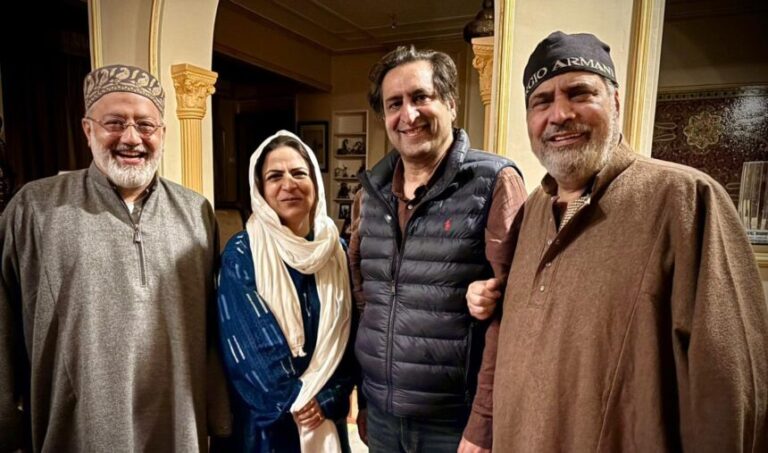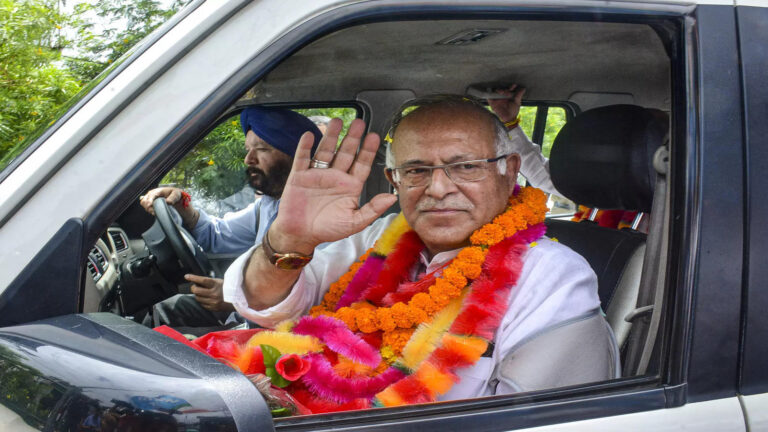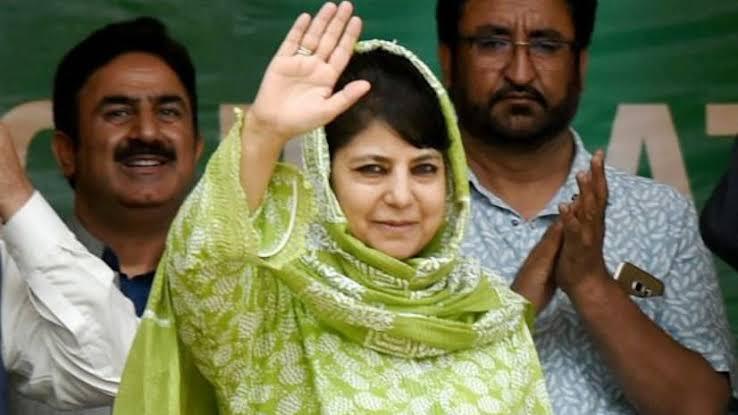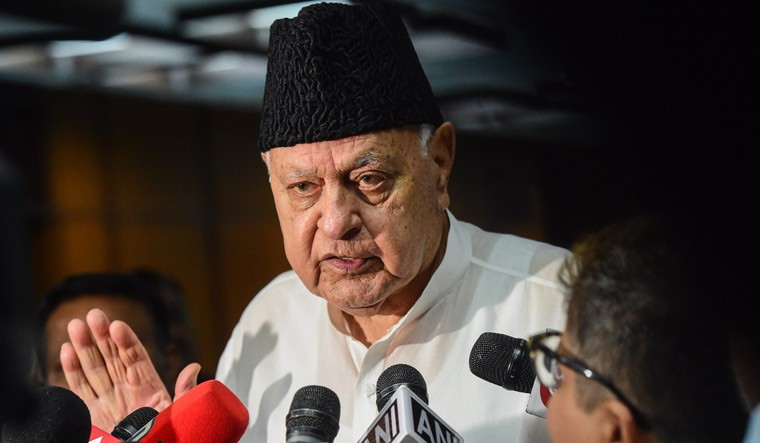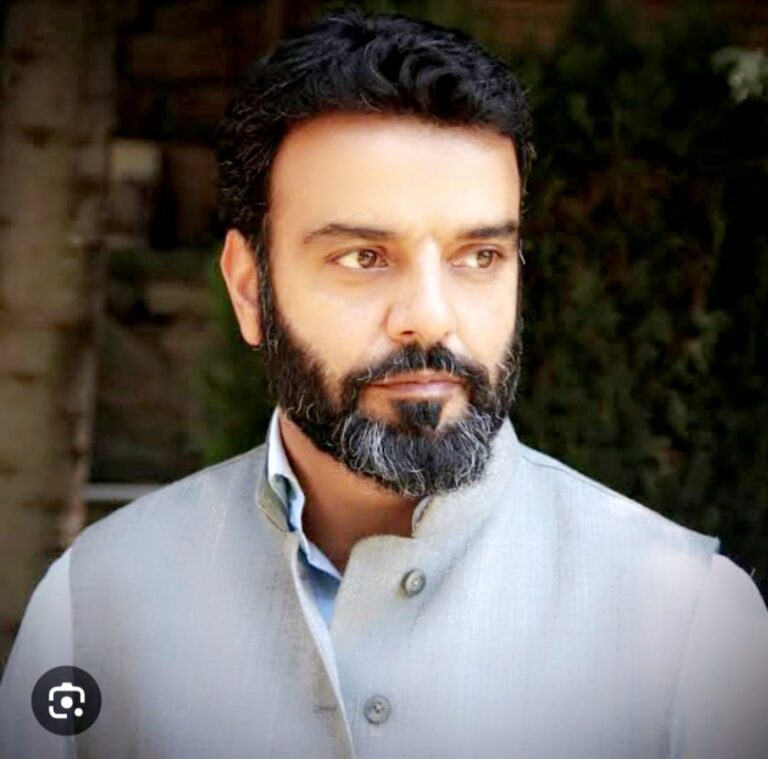The Political Tapestry of Kashmir: A Chronicle of Leadership, Struggle, and Legacy
The Life and Legacy of Maharaja Hari Singh: From Independence to Exile

Hari Singh, born in September 1895 at the Amar Mahal palace in Jammu, was the sole surviving son of Raja Amar Singh and Bhotiali Chib. In 1923, upon the death of his uncle, he ascended to the throne as the Maharaja of Jammu and Kashmir. During India’s independence in 1947, Singh initially wished for Jammu and Kashmir to remain independent. However, faced with an invasion by tribal forces and the Pakistan Army, he signed the Instrument of Accession to India on 26 October 1947, securing military assistance from Indian troops. Despite remaining the titular Maharaja until 1952, the Indian government abolished the monarchy, and Singh spent his final years in Bombay, passing away on 26 April 1961.
Singh’s reign was marked by considerable turmoil. He faced a significant agitation in Kashmir in 1931 and rebellions in Poonch and Gilgit-Baltistan. Controversially, he was also involved in the 1947 Jammu massacres. Educated at Mayo College and later at the British-run Imperial Cadet Corps in Dehradun, Singh was well-prepared for leadership. In 1915, he was appointed commander-in-chief of the State Forces, and by 1926, he ascended the throne following his uncle Pratap Singh’s death, under British intervention.
Hari Singh’s coronation in February 1926 was an elaborate affair, divided into religious and official ceremonies. As a ruler, Singh initiated significant reforms, including free elections and the establishment of the Praja Sabha, Jammu and Kashmir’s Legislative Assembly. He implemented progressive laws under the Ranbir Penal Code, promoted compulsory primary education, banned child marriage, and opened places of worship to lower-caste individuals.
In 1930, Singh attended the First Round Table Conference in London, advocating for an All-India Federation and equal status for Indians within the British Commonwealth. Following India’s independence, Singh’s initial stance of independence for Jammu and Kashmir shifted due to escalating violence and invasion threats. His appeal to India for military aid led to the state’s accession to India and subsequently the first Indo-Pakistan War.
Under pressure from Indian leaders Nehru and Patel, Singh appointed his son Karan Singh as Prince Regent in 1949, and later as ‘Sadr-e-Riyasat’ in 1952, marking the end of the monarchy. Despite his contentious relationships with both Nehru and Kashmiri leader Sheikh Abdullah, Singh’s legacy continued through various commemorations, including statues and parks in his honor.
After his exile from Jammu and Kashmir post-accession, Singh lived in Bombay until his death. His ashes were spread across Jammu and Kashmir, in accordance with his wishes. Hari Singh’s life was also marked by personal scandals, including a notable blackmail case in 1921 and his lavish spending habits. Despite his four marriages, only his last wife, Tara Devi Sahiba of Kangra, bore him a son, Karan Singh.
Singh’s legacy is remembered through various memorials and statues, celebrating his contributions and reforms in Jammu and Kashmir. His birth anniversary on 23 September is now a public holiday in the region, reflecting his enduring influence on its history.
The Legacy of Bakshi Ghulam Mohammed: Architect of Modern Kashmir
Bakshi Ghulam Mohammed served as the Prime Minister of Jammu and Kashmir for eleven years, from 1953 to 1964. His tenure was marked by remarkable administrative skills, courage, and practical wisdom, leading to significant progress in the state.

Born in 1907, Bakshi Ghulam Mohammed received his education at C.M.S Tyndale Biscoe School. He began his career as a school teacher in remote areas like Skardu and Leh and later worked with the Kashmir branch of the All India Spinners’ Association. In 1927, he joined Sheikh Mohammed Abdullah in advocating for the civic and political rights of the Muslim population under the Dogra rulers, which led to the formation of the Muslim Conference in 1930.
Bakshi’s organizational skills and dedication were evident during the struggle. He formed unions for students and workers and endured several imprisonments, including a harsh sixteen-month term in Reasi sub-Jail. His bravery earned him the title “Khalid-e-Kashmir,” reminiscent of the famed Muslim general Khalid-bin-Walid.
By 1938, the movement for responsible government had gained support across communities, leading to the renaming of the Muslim Conference to the National Conference. During this time, Bakshi operated underground to evade the state police. In 1946, amid the “Quit Kashmir” movement, he fled to British India when a warrant was issued for his arrest. He traveled extensively to garner support for the Kashmir cause, returning home after the warrant was withdrawn following Mahatma Gandhi’s visit to Kashmir.
In October 1947, Sheikh Mohammed Abdullah was released from prison and became Prime Minister, appointing Bakshi as Deputy Prime Minister with the Home portfolio. In 1948, during Sheikh Abdullah’s absence, Bakshi served as Chief Administrator. In August 1953, after Sheikh Abdullah’s dismissal and arrest, Bakshi became the Prime Minister and President of the National Conference through a majority vote.
As Prime Minister, Bakshi was a transformative leader, earning the moniker “Architect of Modern Kashmir” for his developmental work. He connected deeply with people at the grassroots level, fostering significant popularity across the state. His efforts laid the foundation for a prosperous “Naya Kashmir,” earning widespread acclaim.
Politically, Bakshi faced challenges from the Plebiscite Front, formed in 1955, but maintained firm control over state affairs. In May 1963, following Congress’s losses in several by-elections, the AICC under the Kamaraj plan recommended that certain ministers resign to strengthen party work. Despite not being a Congress member, Bakshi offered a token resignation, which was accepted along with those of other ministers.
Bakshi’s eleven-year tenure as Prime Minister is considered the Golden Period in Jammu and Kashmir’s post-independence history. He staunchly defended the state’s special status within India and was the last to hold the title of Prime Minister of Kashmir.
In 1964, Bakshi led the opposition against Chief Minister Ghulam Mohammed Sadiq. Later that year, despite having majority support in the Assembly, he was arrested and detained under the Defence of India Rules. He was released on health grounds in December 1964 and announced his retirement from politics in June 1965. However, his popularity persisted, and in 1967, he was elected to the Lok Sabha on a National Conference ticket, defeating the Congress nominee by a significant margin. He served in the Lok Sabha until 1971.
Bakshi Ghulam Mohammed passed away in July 1972, leaving behind a legacy of modernizing Kashmir and freeing it from ignorance, hunger, poverty, and backwardness.
Ghulam Mohammed Sadiq: From Prime Minister to Chief Minister of Jammu and Kashmir
Ghulam Mohammed Sadiq, an alumnus of Islamia College in Lahore and Aligarh Muslim University, played a significant role in Jammu and Kashmir’s political landscape. Initially serving in Sheikh Abdullah’s cabinet from 1947 to 1953, he later led the National Conference party from 1957 to 1961 before joining the Indian National Congress. In 1964, he was elected Prime Minister of Jammu and Kashmir. The following year, the J&K Constitution was amended, replacing the position of Prime Minister with Chief Minister, making Sadiq the state’s first Chief Minister under the new title in 1965.

Tragically, Sadiq died in office from a heart attack on December 12, 1971, at the age of 50. His death occurred in a Chandigarh hospital, where he had been receiving treatment for jaundice for three weeks. At the time, Indian and Pakistani forces were engaged in conflict within the state.
Sadiq had a long and varied political career. He first served in the state legislature of Jammu and Kashmir in 1934 under British rule and became chairman of the state’s Muslim Conference in 1939. After the 1947 partition, he was appointed Minister of Development in the Indian-administered part of Kashmir and later held positions as president of the Constituent Assembly and Minister of Health and Education. His leadership of the National Conference party lasted from 1957 to 1961.
Known for his honesty and good intentions, Sadiq faced challenges in pushing for a more democratic administration due to the sensitive nature of Kashmir’s political situation, where the aspirations of the Muslim population were often viewed as a challenge to Indian authority.
Earlier in 1971, the Jammu and Kashmir police uncovered a plot to assassinate Sadiq and kidnap other ministers, allegedly organized by Pakistan through the Plebiscite Front, an outlawed opposition group. Despite these challenges, Sadiq’s commitment to his duties remained steadfast until his untimely death.
Syed Mir Qasim: Champion of Kashmir’s Democratic Movement and Political Leader
Syed Mir Qasim (1921 – 12 December 2004) was a prominent Indian politician who served as the Chief Minister of Jammu and Kashmir from 1971 to 1975. His political journey began during the British Raj, where he emerged as a leader of the non-sectarian, pro-democracy Quit Kashmir movement, advocating against the monarchical rule of Maharaja Hari Singh, which led to his imprisonment.

Following India’s independence, Qasim played a key role in drafting the Constitution of Jammu and Kashmir and held various important positions at both the state and union levels. He was instrumental in establishing the Indian National Congress in Kashmir. After the death of Ghulam Mohammed Sadiq, Qasim took over as the Chief Minister of Jammu and Kashmir. In 1975, he resigned to facilitate the return of Sheikh Abdullah, following an accord between Abdullah and the Indian Government.
Qasim detailed his experiences and the broader struggle of Kashmiris in his autobiography, “My Life and Times,” published in September 1992. The book offers valuable insights into the Quit Kashmir movement and the complex issues surrounding Kashmir’s accession to India instead of joining Pakistan.
Syed Mir Qasim passed away in an ambulance near India Gate in New Delhi on 12 December 2004, at the age of 83. Honoring his wishes, he was buried in his birthplace, Dooru in Kashmir, where thousands attended his funeral peacefully. In 2005, he was posthumously awarded the Padma Bhushan, India’s third-highest civilian award, by President APJ Abdul Kalam.
Sheikh Mohammad Abdullah: A Key Figure in Jammu and Kashmir’s Political Landscape
Sheikh Mohammad Abdullah (5 December 1905 – 8 September 1982) was an influential Indian politician who played a pivotal role in the politics of Jammu and Kashmir. He was the founding leader of the All Jammu and Kashmir Muslim Conference, which later became the Jammu and Kashmir National Conference. Abdullah served as the first elected Prime Minister of Jammu and Kashmir after its accession to India, advocating for self-rule and opposing Maharaja Hari Singh’s regime.

Abdullah’s tenure as the first elected Prime Minister of Jammu and Kashmir was marked by significant political turbulence. His advocacy for self-rule and democratic governance led to his eventual imprisonment by the Indian government, citing his alleged support for insurgent activities. On 8 August 1953, he was dismissed from his position, and Bakshi Ghulam Mohammad replaced him. In 1965, the titles ‘Sadr-i-Riyasat’ and ‘Prime Minister’ were changed to ‘Governor’ and ‘Chief Minister’, respectively. Abdullah returned to power as Chief Minister in 1974 after reaching an accord with Prime Minister Indira Gandhi and remained in office until his death in 1982.
Early Life
Born on 5 December 1905 in Soura, a suburb of Srinagar, Abdullah faced early challenges, losing his father two weeks after his birth. In his autobiography, Aatish-e-Chinar, he claims his great-grandfather was a Hindu Brahmin who converted to Islam under the influence of a Sufi preacher. Abdullah’s father was a middle-class manufacturer and trader of Kashmiri shawls. Abdullah, the youngest of six siblings, started his education at a traditional school or maktab, learning Quranic recitation and basic Persian texts. He later attended several schools, culminating in his matriculation from Punjab University in 1922.
Higher Studies
After completing his matriculation, Abdullah joined Shri Pratap (S. P.) College, aiming initially for a medical career but later shifted to general science at Prince of Wales College in Jammu, where he was denied admission. He then attended Islamia College, Lahore, and graduated from there. In 1930, Abdullah obtained an M.Sc. in Chemistry from Aligarh Muslim University. His time at Aligarh exposed him to liberal and progressive ideas, shaping his future political ideology.
Political Beginnings
In the 1920s, political associations were banned, but Abdullah was part of the Islamia School Old Boys Association and later the Fateh Kadal Reading Room Party, where he discussed political issues with peers. This group gained recognition after presenting their views on government recruitment policies to the Regency Council in 1930.
Muslim Conference
Influenced by Molvi Abdullah, a Kashmiri polymath, Abdullah and his colleagues formed the Kashmir Muslim Conference in 1932, which later became the National Conference in 1939. This change aimed to include all oppressed sections of society, not just Muslims. The National Conference became a significant political force under Abdullah’s leadership, advocating for the rights of all communities.
Electoral Politics
The 1931 agitation led to the establishment of the Praja Sabha in 1934, an elected legislative assembly, but real power remained with the Maharaja. In 1951, Abdullah’s government held elections to a Constituent Assembly, marking the beginning of democratic governance in the state. His close relationship with Jawaharlal Nehru, leader of the Indian National Congress, further strengthened his political position.
Quit Kashmir Agitation and Arrest
In 1946, Abdullah launched the Quit Kashmir agitation against Maharaja Hari Singh, leading to his imprisonment. He was released in 1947, just before the accession of Jammu and Kashmir to India. Appointed head of an emergency administration, he played a crucial role during the tumultuous period following the accession.
Dismissal and Reconciliation
In 1953, Abdullah was dismissed and imprisoned on charges of conspiracy. He was released in 1964 and later worked as a bridge between India and Pakistan. His efforts to resolve the Kashmir issue through dialogue marked a significant phase in his political career.
Later Years and Legacy
After his release, Abdullah returned to power as Chief Minister following the 1974 Indira-Sheikh accord. He served in this capacity until his death in 1982. Abdullah’s life and work significantly impacted Jammu and Kashmir’s political landscape, earning him the title “Sher-e-Kashmir” (Lion of Kashmir).
Abdullah’s legacy is commemorated in various institutions and landmarks, such as the Sher-e-Kashmir University of Agricultural Sciences and Technology and the Sher-i-Kashmir Institute of Medical Sciences. His life has been documented in works like The Flame of the Chinar, a 1998 documentary, and he remains a central figure in the region’s history.
Dr Farooq Abdullah
Dr. Farooq Abdullah (born October 21, 1937) is an esteemed Indian politician who currently serves as the President of the Jammu & Kashmir National Conference. Throughout his career, he has held the position of Chief Minister of Jammu and Kashmir multiple times since 1982 and served as the Union Minister for New and Renewable Energy from 2009 to 2014. He is the son of Sheikh Abdullah, the first elected Chief Minister of Jammu and Kashmir, and the father of Omar Abdullah, a former Chief Minister of the state.

Early Life and Education
Farooq Abdullah was born to Sheikh Abdullah, a prominent statesman and leader of the National Conference, and Begum Akbar Jehan Abdullah. He received his early education at Tyndale Biscoe School before earning an MBBS degree from SMS Medical College, Jaipur. He later traveled to the UK to practice medicine.
Family
Farooq Abdullah is married to Molly, a British-origin nurse. They have one son, Omar, and three daughters, Safia, Hinna, and Sara. Omar Abdullah has been active in state and national politics, serving as a member of the Lok Sabha and as Chief Minister of Jammu and Kashmir. Sara was married to Congress leader Sachin Pilot, though they have recently divorced.
Political Career
Farooq Abdullah entered politics by being elected to the Lok Sabha unopposed from the Srinagar constituency in the 1980 General Election.
Chief Minister: 1982–1984
Farooq Abdullah stepped into the political arena of Jammu and Kashmir as a novice when he was appointed president of the National Conference in August 1981, largely due to being Sheikh Abdullah’s son. After his father’s death in 1982, he became the Chief Minister. However, his government collapsed in 1984 when his brother-in-law Ghulam Mohammad Shah led a faction of the National Conference to break away, with Congress support.
1984–1996
In 1986, after the communal riots in South Kashmir, G.M. Shah’s government was dismissed, and a new National Conference-Congress government was formed with Farooq Abdullah as Chief Minister following the Rajiv-Farooq accord. The 1987 elections, which were marred by allegations of rigging, saw the National Conference-Congress alliance win, but the period was marked by increased militancy and the exodus of Kashmiri Pandits. Abdullah resigned in protest after Jagmohan was appointed governor and subsequently moved to the UK.
Chief Minister: 1996–2002
Returning to India, Abdullah won the 1996 Legislative Assembly elections and served a full six-year term as Chief Minister. In 1999, the National Conference joined the Atal Bihari Vajpayee-led National Democratic Alliance, and Omar Abdullah was appointed as a Union Minister of State for External Affairs.
Subsequent Political Career
In the 2002 Legislative Assembly elections, Farooq Abdullah aimed to continue his political career at the central level while Omar Abdullah led the National Conference. The party lost, and a coalition government headed by Mufti Mohammad Sayeed took office. Farooq Abdullah was subsequently elected to the Rajya Sabha in 2002 and re-elected in 2009, later resigning to win a Lok Sabha seat from Srinagar. He served as the Cabinet Minister of New and Renewable Energy in the UPA government.
In the 2014 General Election, Abdullah contested the Srinagar seat but was defeated by PDP candidate Tariq Hameed Karra. However, in a 2017 by-election, he won the seat again by defeating PDP candidate Nazir Ahmed Khan.
Detention and Recent Developments
On September 16, 2019, Abdullah was detained under the Public Safety Act following the revocation of Article 370. He was released after seven and a half months on March 13, 2020. In 2022, he was proposed as the Opposition’s candidate for the President of India by several leaders, including Mamata Bannerjee, but he declined to remain active in politics and focus on issues concerning the Kashmir Union Territory.
Mufti Mohammad Sayeed
Mufti Mohammad Sayeed (January 12, 1936 – January 7, 2016) was a prominent Indian politician who served as the Chief Minister of Jammu and Kashmir twice, from November 2002 to November 2005 and again from March 2015 to January 2016. He held significant positions, including Minister of Tourism in Rajiv Gandhi’s cabinet and Home Minister of India in V. P. Singh’s cabinet. Initially part of the National Conference under G. M. Sadiq, he eventually joined the Indian National Congress before moving to Janata Dal in 1987 and later founding the People’s Democratic Party (PDP). His daughter, Mehbooba Mufti, currently leads the PDP.

Early Life
Mufti Sayeed was born on January 12, 1936, in Bijbehara, Anantnag district, within the princely state of Jammu and Kashmir in British India. He hailed from a Kashmiri Muslim family of clerics. Sayeed completed his early education in Srinagar and obtained a law degree and a postgraduate degree in Arabic from Aligarh Muslim University before entering politics.
Political Party Affiliations
Sayeed began his political career in the 1950s with the Democratic National Conference, a splinter group of the Jammu & Kashmir National Conference led by Ghulam Mohammed Sadiq. He was appointed district convenor of the party, which later merged back into the National Conference in 1960. In 1962, he was elected to the Legislative Assembly from Bijbehara and became a Deputy Minister after Sadiq became Chief Minister in 1964. The National Conference merged with the Indian National Congress in 1965, making Sayeed a Congress member.
In 1972, he became a cabinet minister and president of the state Congress unit. He joined Rajiv Gandhi’s government in 1986 as Minister of Tourism. In 1987, he left Congress to join V. P. Singh’s Jan Morcha, becoming the first Muslim Home Minister in the Union Cabinet of India from 1989 to 1990. He rejoined Congress under P. V. Narasimha Rao but left again in 1999 to form the Jammu and Kashmir People’s Democratic Party with his daughter, Mehbooba Mufti. The PDP won 18 assembly seats in the 2002 elections and formed a coalition government with Congress, with Sayeed serving as Chief Minister for three years.
During his tenure, Sayeed merged the autonomous Special Operations Group with the Jammu and Kashmir Police. His leadership coincided with a peace process led by Indian Prime Ministers Atal Bihari Vajpayee and Manmohan Singh and Pakistani President Pervez Musharraf, resulting in the opening of the Line of Control (LOC) for trade and bus services.
Chief Minister: Second Tenure (2015–2016)
In the 2014 Jammu and Kashmir Legislative Assembly election, the PDP emerged as the largest party but fell short of a majority. Sayeed became Chief Minister again in 2015 following a coalition agreement between the PDP and the BJP.
Union Minister for Home Affairs
In 1989, shortly after becoming Union Home Minister, Sayeed’s third daughter, Rubaiya, was kidnapped and later released under pressure. His tenure witnessed the exodus of Kashmiri Hindus and multiple attacks on his life by Kashmiri separatists.
Death
Mufti Mohammad Sayeed was admitted to AIIMS hospital in New Delhi on December 24, 2015, with neck pain and fever. His condition worsened, leading to multi-organ failure, and he passed away on January 7, 2016, just days before his 80th birthday. His death prompted reactions from Prime Minister Narendra Modi, Home Minister Rajnath Singh, and the 14th Dalai Lama. Sayeed was buried with state honors at his ancestral burial ground in Bijbehara. Former Chief Ministers Omar Abdullah and Ghulam Nabi Azad attended his funeral. Condolences poured in from various political leaders, including former President Pranab Mukherjee and Delhi Chief Minister Arvind Kejriwal. Following his death, the PDP supported Mehbooba Mufti as the next Chief Minister, a decision the coalition ally BJP did not oppose.
Mufti Mohammad Sayeed was laid to rest in Dara Shikoh Garden, Bijbehara.
Absolutely, here’s the article you requested:
The Enigmatic Legacy of Syed Ali Shah Geelani: Champion of Kashmiri Separatism
Syed Ali Shah Geelani, a towering figure in the tumultuous landscape of Kashmir, left an indelible mark on the region’s history. Born in 1929, Geelani’s journey from the classrooms of Sopore to the corridors of power in Kashmir was marked by fervent advocacy for the Kashmiri cause.
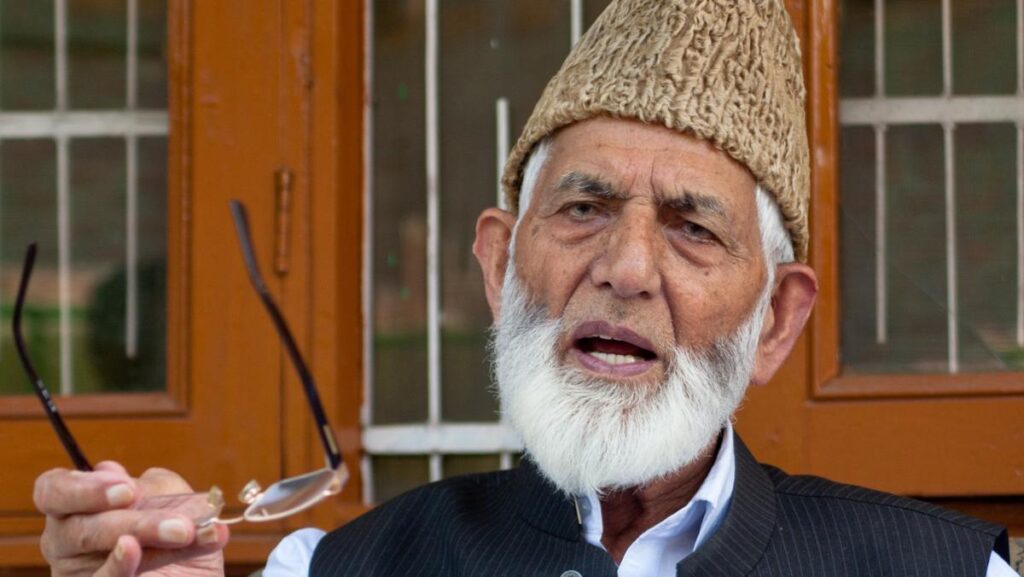
Early Years and Ideological Foundations
Geelani’s educational pursuits in Sopore and later theological studies in Lahore laid the groundwork for his unwavering commitment to the Islamist ideology of Jamaat-e-Islami. Influenced profoundly by the teachings of Maulana Abul A’la Maududi, Geelani emerged as a prominent member of Jamaat-e-Islami Kashmir in the 1950s, setting the stage for his future political endeavors.
Political Ascendancy and Struggle
Entering the political arena in the 1970s, Geelani found himself navigating the complex landscape of Kashmiri politics. His three terms in the Jammu and Kashmir Legislative Assembly on a Jamaat-e-Islami ticket showcased his early foray into electoral politics. However, disillusioned by allegations of electoral malpractice, Geelani resigned in 1989, signaling a shift towards a more confrontational approach.
Architect of Separatist Movements
In 1993, Geelani played a pivotal role in the formation of the All Parties Hurriyat Conference (APHC), a coalition of Kashmiri separatist groups. Despite initial leadership roles, his staunch pro-Pakistan and pro-jihadist stance led to fractures within the alliance, culminating in the formation of his own faction of the Hurriyat Conference. Geelani’s fiery rhetoric and unwavering commitment to Kashmir’s accession to Pakistan galvanized support among segments of the populace, while drawing the ire of Indian authorities.
Controversy and Confrontation
Geelani’s uncompromising stance on Kashmir’s status as an integral part of Pakistan made him a lightning rod for controversy. Accused by Indian authorities of fomenting violence and acting as a proxy for Pakistan, he became a polarizing figure in the region. His calls for strikes and protests, coupled with his perceived role in the rise of militancy, further cemented his status as a controversial figure.
Legacy and Ongoing Debate
Geelani’s death in 2021 marked the end of an era, yet his legacy continues to reverberate across Kashmir and beyond. While some laud him as a valiant champion of Kashmiri self-determination, others decry him as a radical ideologue whose actions exacerbated violence in the region. The debate surrounding Geelani’s legacy underscores the complexities of Kashmir’s political landscape and serves as a poignant reminder of the enduring struggle for autonomy and identity.
In Conclusion
Syed Ali Shah Geelani’s enigmatic legacy epitomizes the multifaceted nature of Kashmiri separatism. His unwavering commitment to the Kashmiri cause, coupled with his controversial methods, ensures that his impact on the region’s history will be debated for generations to come. As Kashmir continues to grapple with its political destiny, Geelani’s legacy serves as a poignant reminder of the enduring quest for justice and self-determination in the Valley.
You May Like:
Kashmir Politics From Mahraja Hari Singh To Syed Ali Geelani
Jamat e Islami former Gen Secy casts vote Reveals Shocking Details About 1987 Election Rigging
Mirwaiz Umar Farooq Calls for Dialogue, Offers Two Steps Forward for Peaceful Resolution
To Know More About Kashmir please Click Here

